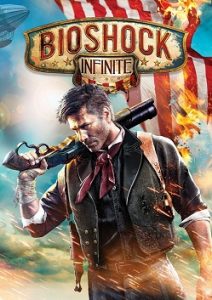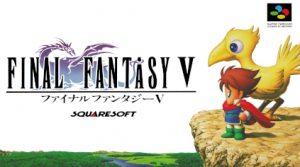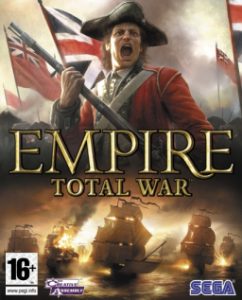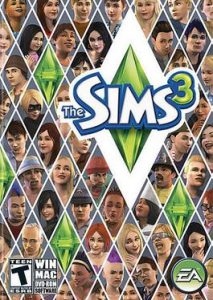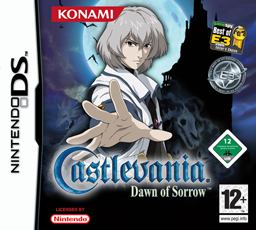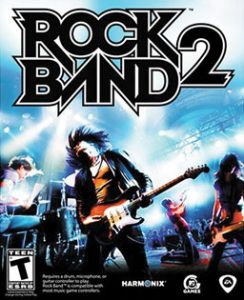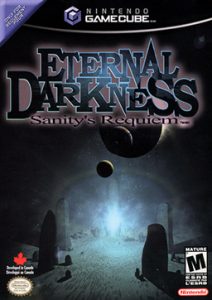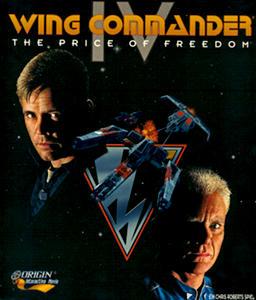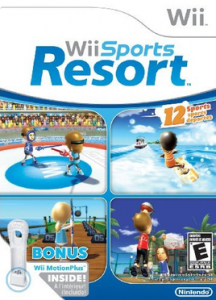This is a weird feeling. Eleven years ago the first post for this blog went up and even as we expected the train to stop, it kept going for all that time, regularly posting, playing a few games every weekend, dedicating most Sunday afternoons to the blog, and now we’re at the end. Right now my head is spinning at the idea of free time and what I can do with the extra time on Sundays.
That’s not to say it’s been a negative. While I’ve had trouble with some of them, I’ve loved playing most of them and even more, I’ve loved exploring them. Even when a game didn’t appeal, there could be something interesting in finding out why, analyzing and writing down my thoughts. As always, the hardest games to judge were the middle of the road ones – nothing bad, but nothing really good to say either.
In that time, I’ve become a more rounded gamer, where I can say I’ve experienced the highlights in gaming and have tried a bit of everything, without trying to be too prejudiced. I’ve learned a lot, my console FPS skills have gone up, I’ve gotten better at shooters and have been used to a lot more situations. I think I’ve (marginally) improved my writing skills, trying to pick up some tricks to make it flow better. I have also not done that as much as I probably could have, because I’ve just been plugging at what I’ve done, but I hope my introspection has been worth it.
But as I wrote in some notes elsewhere recently is that this also helped me think about games, how they’re constructed and what makes them tick. Why do I like them? Why does something work or not work? How is a game put together? How does it make me feel or play a certain way? How does it teach me how it works? There’s a lot of analysis involved that I think I’ve gotten better at as time went on, going beyond how good it is. And while that development is hard to separate, I did end up getting a job in the video game industry, with the blog proving I like games, at least, but hopefully also helping show that bit of insight that I now have in how they work. Nine years later, I’m not too worried about it anymore, but in the industry it helps to have something to talk about it.
If I get past my awkwardness and show you this as a result: Hi! Hope you enjoyed having a look.
The List
With a subjective list like this, you’re always going to have a subjective cut-off in what it should contain. No two people would agree on this, and I have my own disagreements for sure. Should you really have Pokemon Ruby/Sapphire over Pokemon Red/Blue? Is Mega Man 9 really the most notable game of that massive series, and does it really deserve to be left out of the list in the second edition? What is Free Running doing on there?
The list is flawed, and I’ve mentioned this several times. First, the selection of games has some dubious choices, and I’ve pointed some out above. There’s a tendency to ignore some big names while dumping every game in a series on there even when it’s not needed – the different Grand Theft Auto IV expansions are decent games, but having every entry in that franchise on the list is way too much. It’s even worse when that leads to remakes being included – I don’t see why you need to have both Metal Gear Solid and its remake Metal Gear Solid Twin Snakes on the list when the latter doesn’t add that much. Yeah, it plays that much better, but in that case maybe the original should have been skipped. Considering the omissions elsewhere, it feels like this is done by someone focusing on their own biases, not quite looking for enough. Similarly, an old school Sierra game wouldn’t have gone amiss and I would probably have traded something like The Dig for it.
This isn’t helped by over 10% of the original list being games from 2009, with another decent chunk being 2008 games. It makes sense because of the way video games have developed – the medium is still growing so quickly that the boundary of a good game keeps moving, but it also meant that a large chunk of that 10% is outdated now. The list is a victim of its own age there, with the rise of mobile gaming and the growth of indie redefining a lot of the landscape. So-called walking simulators are completely missing, but I would argue that something like What Remains of Edith Finch is part of the discussion of video games as an art. Dear Esther and The Stanley Parable are within the time frame of the second edition and are missed out, while the latter’s playfulness with the expectations of gaming are vital in understanding and looking at video games.
The fact that the second edition arbitrarily only changes twenty games hinders it too. To fit the make up of the first edition, they should have changed at least a tenth of the book to keep up with trends, but (I guess because of costs) this series simply doesn’t do that. Instead, it’s a patchwork job that removes viable games, adds in a few indies, but mostly known quantities, but also – and this got me most – left in a bunch of games that have become physically unplayable. City of Heroes had shut down some time before the book was updated. Reset Generation‘s online version was taken down before the end of 2011 and never returned. It took me years to find a way to play that game, as nobody has an N-Gage 2, and I would say that this is effectively a lost game now. The book still says it’s essential to play though, and that feels wrong here.
It’s a flawed list, but most notably it’s a snapshot in time. While that may make some sense for long running forms of media, with music and movies have built up a canon for a long time, video games are still relatively young and, because of the accessibility of modern tools, are now evolving faster than ever.Making a canonical list at one point of time is already nearly impossible, keeping it updated is a feat that should probably not be attempted for a long time.
In the end, the list was a means to an end. It gave me a chance to explore games as a medium, see a lot of its facets and feel like I’ve actually given everything a good go. I might not have covered your favourite game and I will have missed out on games I should have played, but I feel like in a lot of cases, I’ve played something like it, and it feels like that is the most valuable for me. I have a breadth of experience, having had 1021 different experiences (minus a few remakes), rather than a depth of just a few. To judge something, it feels like that breadth is more important, so you can compare it to a spectrum of experiences, rather than just the one thing you’ve been laser focused on where a deviation will seem bad. I’ve succeeded at that, and I think it will positively inform my gaming life going forward. I’m happy with what I got, even if there was a lot they could have done better.
The Games
Probably the most common question I get asked after explaining what I do for the blog is what the best game I’ve played is. And the honest answer is that, to be honest, I don’t really know. I’ve played over a thousand games for the blog and it’s hard to remember all of them. Even then, from longer exposure, Baldur’s Gate II and Planescape Torment continue to be up there and are the first that continue to come to mind. The fairer question is probably what new games ended up in there, with Mass Effect and Star Wars Knights of the Old Republic II being great additions that fit in the same mold, as well as a larger presence of JRPGs that I enjoyed exploring. Given that, though, the appeal for me has been breadth, not depth, and properly experiences games and series I hadn’t before, such as Halo, Metroid and Jet Set Radio.
And although I should probably remember more bad games, most of them flowed off me and I’ve mostly forgotten about them. Except for Free Running. That game had no business being on the list, and I’ll say that until the end.
What’s Next
Looking at it a year or two ago, I was wondering whether there were any new projects I wanted to take on. I talked about the CRPG Book project in my Final Fantasy V write up and that’s certainly a list I’m going to use as inspiration going forward, but I want to make sure I get my adventure and strategy games in too.
Over the past few years I’ve been helping Peter with Play That Game, a site that aggregates all sorts of top video game lists and makes a single list out of it. There’s obviously a pretty big overlap between the 1021 games I’ve played so far and the top 100 or top 250 on there, but it’ll let me play a lot of more recent worthwhile games that I’m looking forward to playing anyway.
But right now, I think I’m going to enjoy my time off. If you want to see me tackle smaller bits on some TV and music topics, there are bits on my micro blog, but those come with less research, less words and less care – and no schedule, I’ll just be posting when I feel like it. Right now, that’s the pace I’ll be happy with.
If I tackle another topic, I’ll be sure to post it here, so keep an eye out if you’re interested. We’ll see if I ever get to it.
Credits
Before I sign off, I want to thank a few people for their help and support.
Most important, thank you Peter for both indulging me through this blog, for helping out playing early on, setting the tone and style for the blog, and continuing to support me throughout. I hope it hasn’t been too much of an inconvenience and that you enjoyed watching along.
Thanks to Kat and Chris for lending us a whole bunch of great games early on, as well as a Nintendo 64 to play those games properly. They really gave us that early boost we needed.
Thanks to Mike for indulging us in our wild adventures around Manchester and London, looking for specific arcade machines and helping us get a few pictures while we were actually using them.
Thanks to all the arcade owners who kept their weird machines around so we could play games like Final Furlong properly – and thanks to whoever decided to keep a Sega Rally Championship machine at Euro Disney – I did wonder if we could have claimed that trip on expenses if we had been paid for this. Similarly, thanks to the people who sell weird stuff on eBay or to gaming stores, this blog would not have been possible without the second hand gaming market.
And thanks to everyone who stopped by and enjoyed the blog for a few minutes. It never got big, but I always got a thrill out of seeing our numbers crawl up. I hope that you enjoyed reading any post you came here for.
Keep experiencing those games, broaden your horizons, and keep enjoying your time doing it. Goodbye for now!
